Gaming In The Vietnam War – 50th Anniversary Of The Tet Offensive: Part Three
February 5, 2018 by oriskany
We’re back, Beasts of War, for Part Three in our series marking the fiftieth anniversary of the Tet Offensive. Considered the decisive turning point in the Vietnam War, the Tet Offensive saw communist forces launch a massive wave of surprise attacks all across South Vietnam, timed for the “Tet” New Year holiday.
Read The Gaming In Vietnam Series Here
So far, in Part One we took a quick look at the background of the Vietnam War and sketched out communist plans and objectives for the Tet Offensive. In Part Two we looked at the preliminary moves and some of the opening attacks (January 30th and 31st, 1968), specifically around the capital city of South Vietnam, Saigon.
So far, these attacks had been launched by the National Liberation Front (NLF, commonly known as the Viet Cong), primarily against targets defended by the US Army or South Vietnamese ARVN (Army of the Republic of Vietnam). But there was another series of battles further north, near the border between South and North Vietnam.
This was the Demilitarized Zone (DMZ), where most of the fighting took place between units of the United States Marine Corps and the PAVN (People’s Army of Vietnam), often called the NVA for short. These battles were dramatically different, and require a different approach on the tabletop.
These Tet Offensive battles are some of the most famous in the Vietnam War, including the siege of the Marine combat base at Khe Sanh (probably the longest single engagement of the war), and the intense urban street fight in Hue City, so vividly depicted in the Stanley Kubrick movie: Full Metal Jacket.
We’ll also take a look at the NVA attack on the Green Beret special forces base at Lang Vei, one of the more unusual battles in the Vietnam War in that it saw the NVA make concentrated use of tanks, the first time they’d done so in Vietnam.
The Siege Of Khe Sanh
The Marines’ Longest Hour
When the Tet Offensive struck, American commanders had actually been expecting something of a communist offensive. They were totally wrong about where the attack would come, however, and a big reason for this misjudgement was probably the pitched battle already in progress at a place called Khe Sanh.
Khe Sanh was one of a string of fortified “combat bases” built along the DMZ, manned primarily by US Marine Corps units, defending against NVA divisions across the border in North Vietnam. Far to the west along Route 9, Khe Sanh was particularly isolated because it was also stood close to where the Ho Chi Minh Trail passed through Laos.
The Marines at Khe Sanh had been fighting NVA units in the surrounding hills for months, and the base itself had been under full-scale attack for nine days. Accordingly, when intelligence clues hinted at a major communist offensive, Americans assumed it would be an NVA ground invasion, with Khe Sanh as a likely first target.
Of course, we now know that the Tet Offensive would strike practically everywhere in South Vietnam, with the Viet Cong putting special focus on population centres like Saigon. However, the NVA was launching major operations of its own, like an assault on nearby Hue City, the special forces camp at Lang Vei, and continued attacks at Khe Sanh.
For Vo Nguyen Giap (the general who’d beaten the French in 1954), Khe Sanh held special importance. He’d seen how surrounding and smashing an elite enemy force on the fortified ground had broken their nation’s will to fight. If it had worked with French paratroopers at Dien Bien Phu and therefore it might work with US Marines at Khe Sanh.
Giap enacted a similar strategy. Three full NVA divisions, upwards of 20,000 men and hundreds of pieces of artillery, surrounded the Marine combat base and 3000+ foot airstrip. Savage battles took place on the hills around Khe Sanh, both sides determined to hold the high ground that would give their artillery a massive advantage.
Soon, Route 9 was severed and Khe Sanh was cut off and then subjected to ceaseless artillery barrages. At the height of the siege, no fewer than 1300 high-calibre artillery shells hit Khe Sanh in a single day. A desperate and costly effort to reinforce and supply Khe Sanh by air was undertaken, involving hundreds of aircraft and great risk.
The American leadership and media became obsessed with the fate of Khe Sanh. By the time the seventy-seven-day siege finally ended, President Johnson had a scale model of the base built in his situation room. General Westmoreland, the US commander in Vietnam, would propose the use of chemical or even nuclear weapons to save the base.
For players looking to recreate the battle, Khe Sanh presents some unusual challenges. Although the NVA spent weeks digging trenches that crept ever closer to the Khe Sanh perimeter, the long-dreaded all-out infantry assault never came. However, intense battles were fought for the surrounding hilltops.
Long ranged (i.e., off-board) artillery played a huge role on both sides. The NVA used 130mm and even 152mm guns firing all the way from Laos. The Marines not only had their own immediate artillery at Khe Sanh but also fire support from other combat bases like the 175mm howitzers firing from Camp Carroll.
Another key element is air power – quite literally the heaviest, most concentrated use of tactical air support in the history of warfare. At their height, Marine and Navy airstrikes on NVA positions surrounding Khe Sanh reached 400 a day. This is on a field only a few miles wide, where a single fighter carried more tonnage than a World War II B-17.
Then there were the USAF B-52s. Based out of Thailand, Guam, and Okinawa, these “Arc Light” strikes were part of “Operation Niagara”, which had three bombers over Khe Sanh every ninety minutes. They flew so high that no one ever saw or heard the bombers, only acres of countryside abruptly vaporizing in hundreds of shattering explosions.
Despite all this, there were direct NVA attacks on some parts of the Khe Sanh perimeter. One came on February 8th, elements of the NVA 101D Regiment hit Outpost Alpha-1, sparking a furious infantry battle. Another came when the NVA 66th Regiment hit the 37th ARVN Ranger Battalion, South Vietnamese troops flown in to reinforce the Marines.
By March 1968, the NVA realized they weren’t taking Khe Sanh. In April, the US Army 1st AirCav division started clearing Route 9, soon reaching Khe Sanh, lifting the siege and ending the battle. The Marines losses amounted to 205 killed, 800+ wounded. The NVA losses at were at least 2500, although, with those Arc Light strikes, we’ll probably never know for sure.
Assault On Lang Vei
Tanks In The Wire!
Just a few miles from Khe Sanh, even closer to the Laotian border and the Ho Chi Minh Trail, was the small special forces base of Lang Vei. Soon after the Tet Offensive began, Lang Vei was also subjected to a direct NVA assault, prompting a battle very unusual for the Vietnam War, and perhaps very interesting for the table top.
Lang Vei was a much smaller base than Khe Sanh, garrisoned by twenty-six American Green Berets, (“C” Company, 5th Special Forces Group) and ARVN special forces, supported by about 400 “Montagnards.” These were local fighters of the Hre and Bru mountain tribes, trained by the Green Berets as guerrillas against the communist Vietnamese.
During the days leading up to Tet, these Green Berets and their allies detected unmistakable signs that the NVA was about to launch a major offensive. Among these were reports of tanks, both from an NVA deserter and actually finding tank tracks in the jungle. But the reports were dismissed by HQ, as the NVA had never used tanks before.
That all changed a little after midnight on 6th February, 1968, when the 198th Tank Battalion (203rd Armoured Regiment), hit the Lang Vei base from three sides. The tanks were backed up by infantry of the 24th Regiment / 304th Division (led by NVA Colonel Le Cong Phe, commanding the assault) and units of 101D Regiment / 325C Division.
The NVA tanks were Soviet-built PT-76s, light amphibious tanks that don’t seem very impressive when matched against Centurions, M48s, or Leopard Is of the period. But against light infantry armed only with small arms, the warning call that the enemy had “tanks in the [barbed] wire!” was nothing short of terrifying.
The Green Berets were also let down somewhat by their equipment. Fearing imminent attack by NVA armour, the Americans had brought in 100 of the new M72 LAW (Light Anti-tank Weapon). This was a one-shot, shoulder-fired, disposable antitank rocket. This would be one of the first times the new LAWs were being used.
But even against the thin armour of the PT-76, including hits on the flank, the LAW proved incapable of penetrating the NVA tanks. The Americans had better luck with a 106mm recoilless rifle which took out three NVA tanks before being overrun (this brave gunner was listed as MIA until his remains were finally identified in 2015).
The Montagnard tribesmen took the worst losses, often as they tried to break out of the imploding perimeter. Soon Lang Vei was completely overrun, with only a handful of Green Berets cut off in the underground tactical operations centre (TOC). Other Montagnard militia were persuaded to surrender, only to be immediately executed by the NVA.
The battle now became a question of getting those trapped Green Berets to freedom. Sergeant First Class Eugene Ashley put together a force of American survivors and troops from the Royal Laotian Army to try a rescue, but these attempts failed and Ashley was killed. He’d be posthumously awarded the Medal of Honor.
Finally, Captain Frank Willoughby led the handful of American survivors in their own breakout, escaping under cover of air strikes mounted by Douglas A-1 Skyraiders. The planes were told to make three attacks with bombs and rockets, then fly dry runs to keep NVA head down long enough for the Americans to make their escape.
Exhausted and wounded, the Green Berets only made it because ARVN Lieutenant Quy drove a jeep through a hail of NVA fire to give them a ride to the LZ, where a CH-46 helicopter could take them to Khe Sanh and relative safety (remember that Khe Sanh itself was still under heavy artillery fire at the time).
War Across The DMZ
Meanwhile, the NVA was also making hard pushes at targets further east. One of the biggest of these was Hue City, the old Imperial capital of Vietnam. Seized by surprise NVA assault, the city now had to be retaken by USMC, ARVN, and US Army troops in one of the most brutal street battles of the Vietnam War.
Come back next week as we take a look at the Battle of Hue, one the key parts of the big American and South Vietnamese push-back to retake everything the Viet Cong and NVA had seized at the Tet Offensive’s outset.
Meanwhile, post your comments, questions, and input below. Whether larger battles like Khe Sanh or smaller skirmishes like Lang Vei, have you tried Vietnam-themed games, in Flames of War, Charlie Don’t Surf, or Force-on-Force?
What features do you bring to your games to give it a Vietnam element?
"These Tet Offensive battles are some of the most famous in the Vietnam War, including the siege of the Marine combat base at Khe Sanh..."
Supported by (Turn Off)
Supported by (Turn Off)
"...the warning call that the enemy had “tanks in the [barbed] wire!” was nothing short of terrifying"
Supported by (Turn Off)









































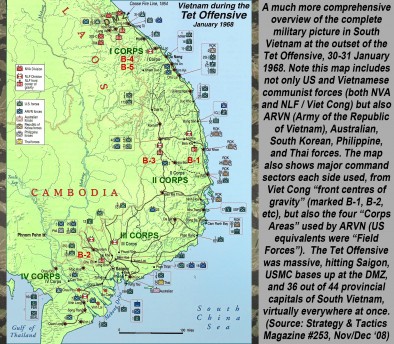

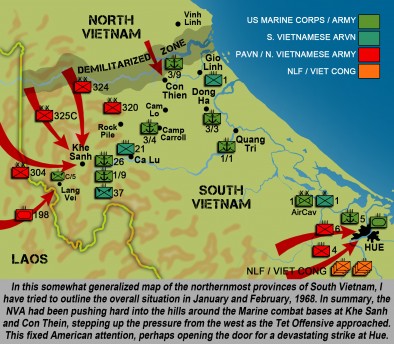
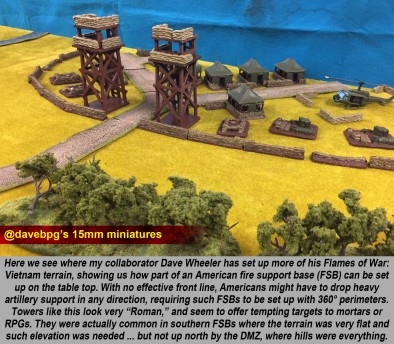
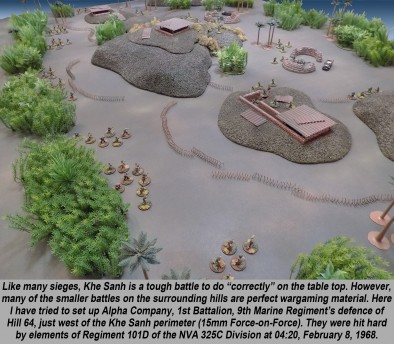
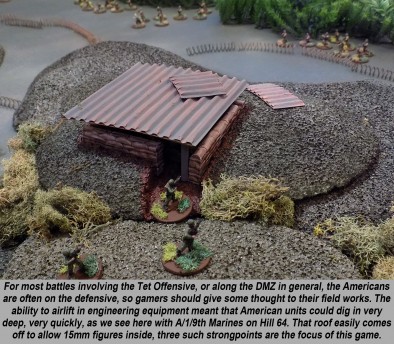
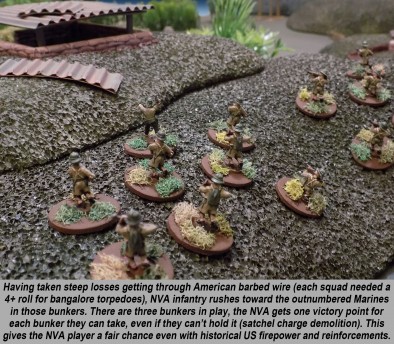
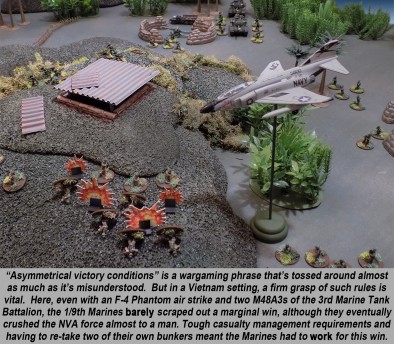

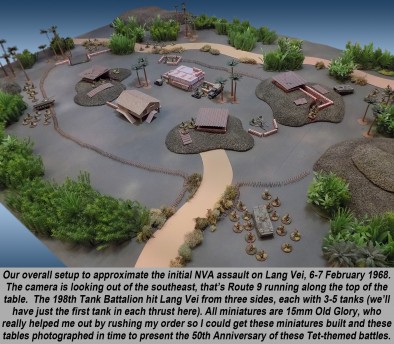

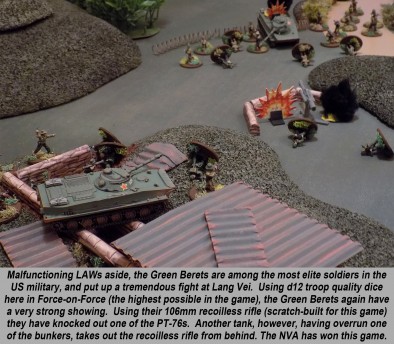
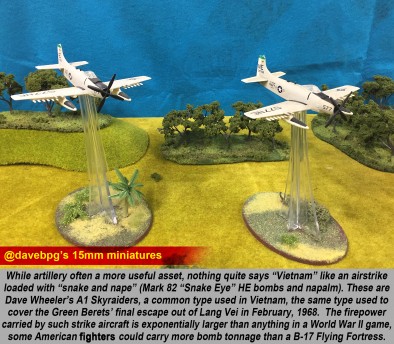



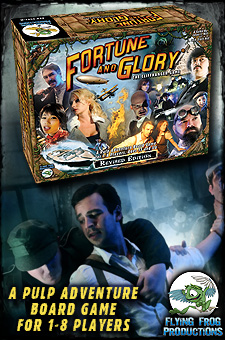

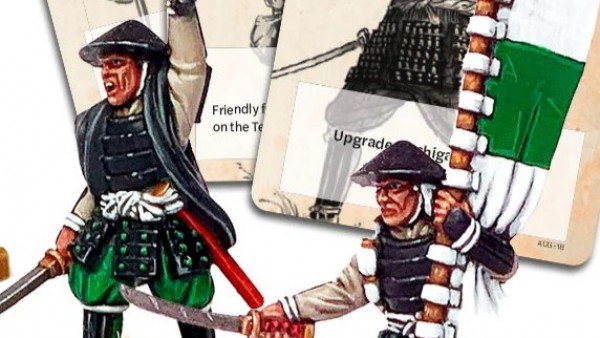
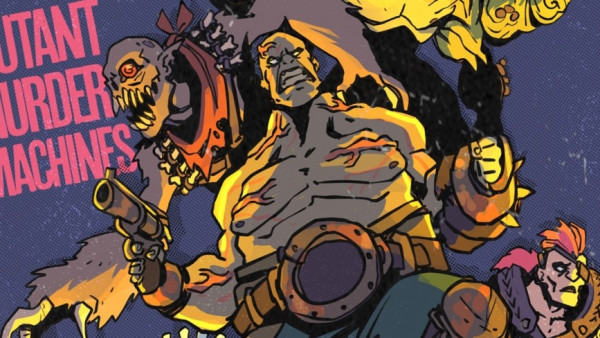



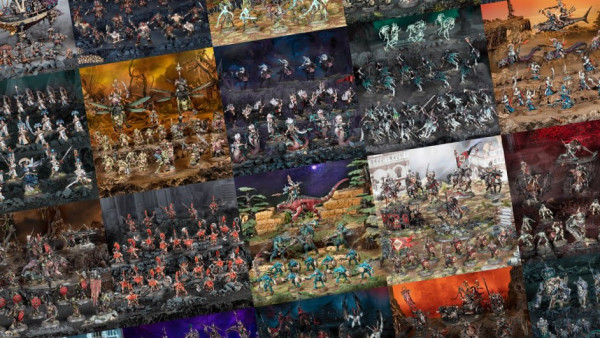
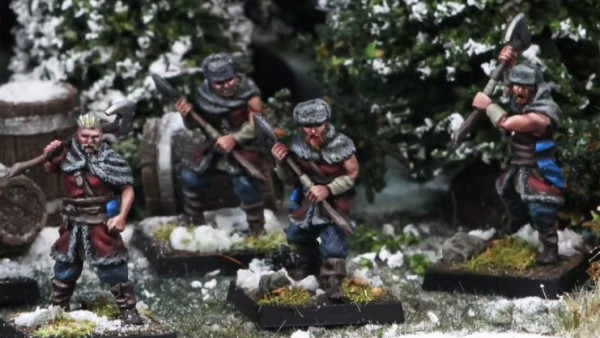
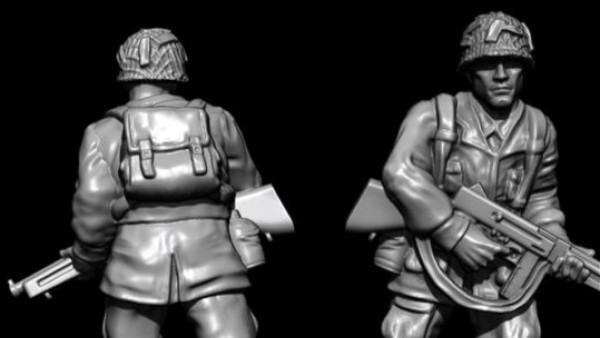

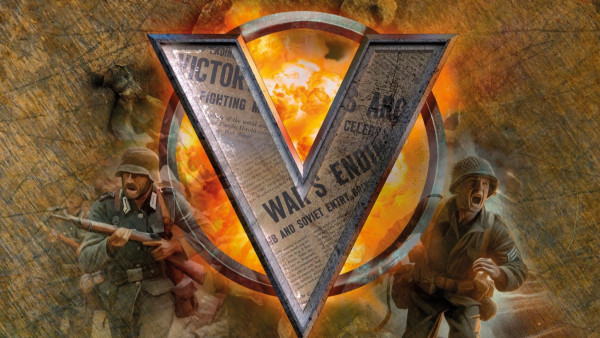
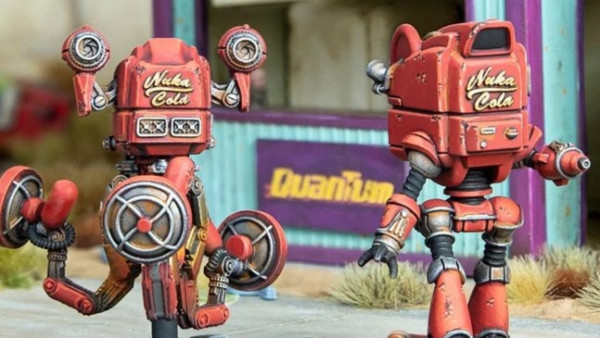

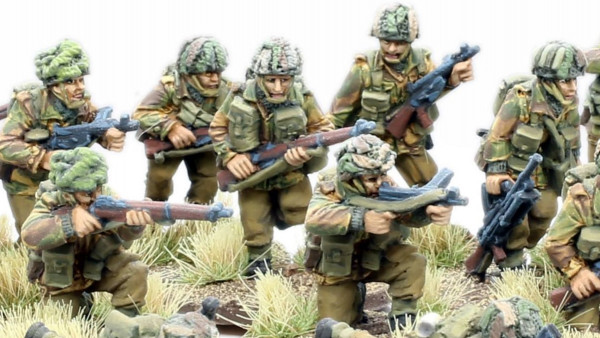

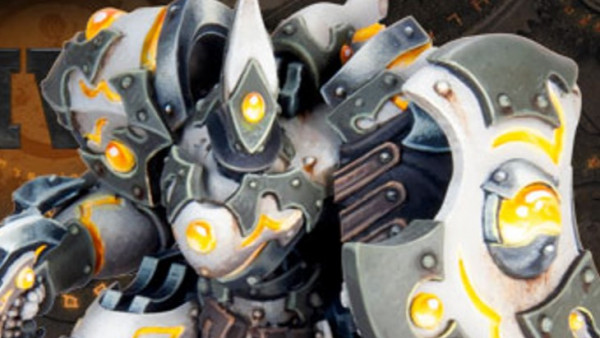
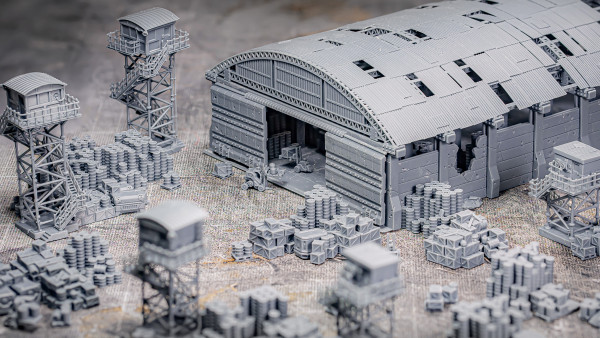

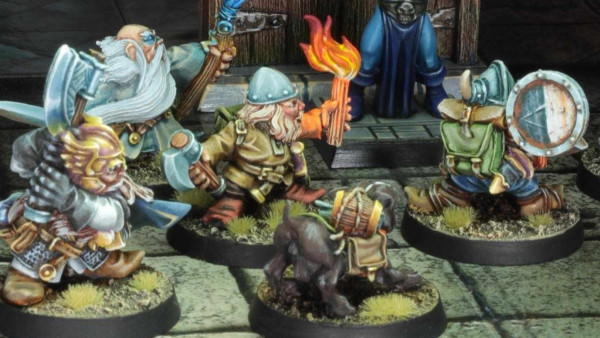
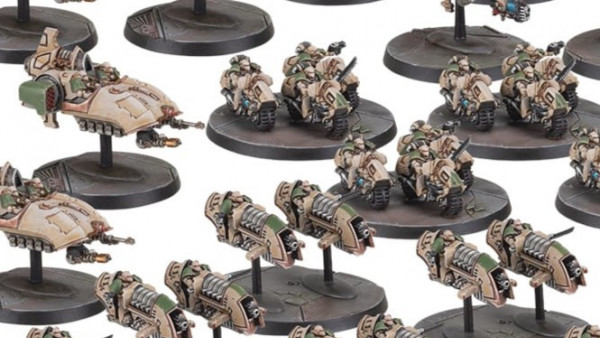
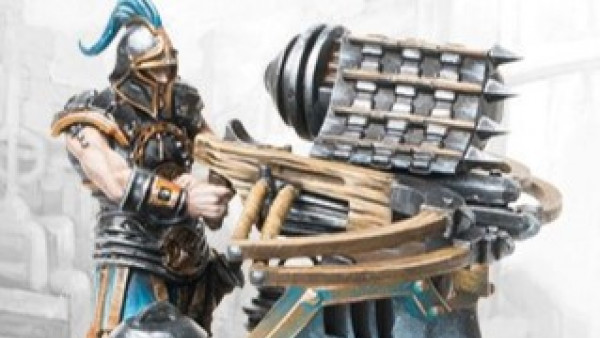
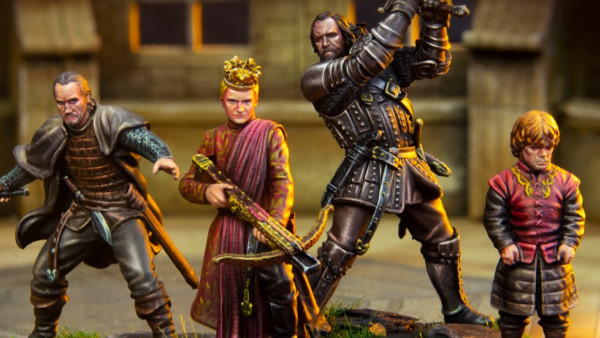

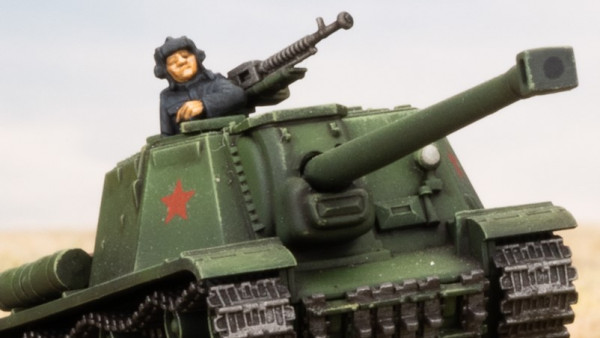
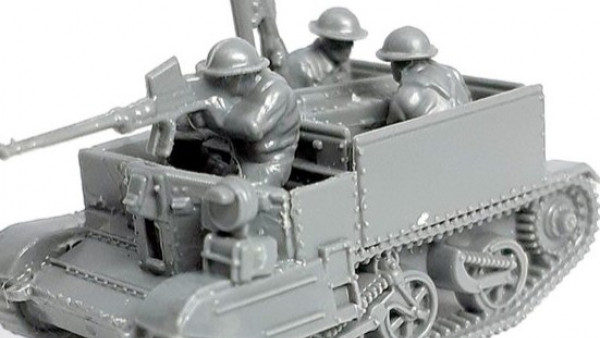
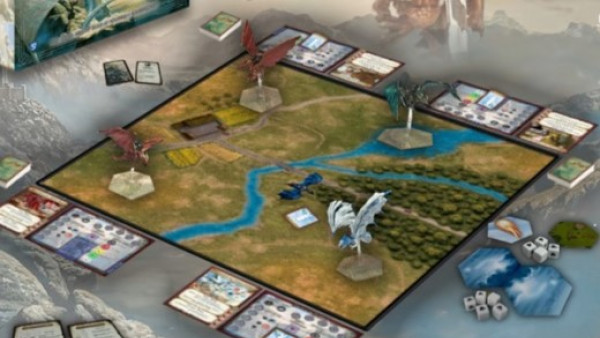
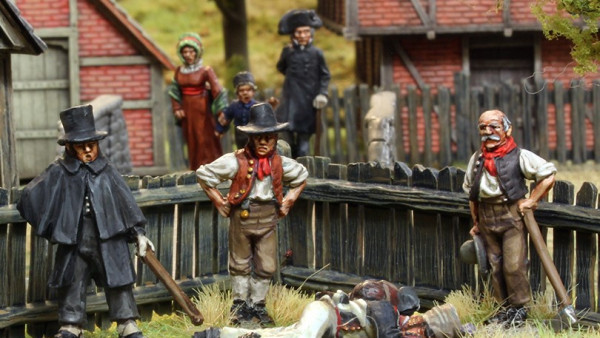

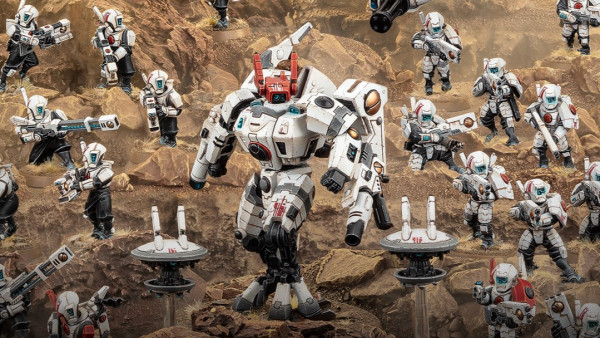

Interesting write up on Khe Sanh. It was incredible how focused the whole country became on this one spot, all the way up to the President.
Thanks for kicking us off, @pslemon – Indeed it’s always been pointed out how large a factor Khe Sanh played into the overall American misjudgment on exactly when and where (and by whom, precisely) the Tet Offensive would be delivered. Some say Khe Sanh shouldn’t have been defended at all. I don’t know if I would agree with that, as the battle / siege tied down two divisions of NVA, plus support battalions and regiments. That’s a lot of firepower to throw into a “diversion,” so I don’t know of we should buy too completely into the idea that this… Read more »
Great read again. Only read about the attack on Lang Vei in passing. Already thinking about what a great scenario this could be. As with those tribes men it’s not the typical red vs. blue. There could be some kind of perimeter. Defended by the Green Berets and the tribes men (I think of them as similar as the viet cong) and the NVA has to break through using Infantry and PT-76s. Then the after the first perimeter is penetrated, the survivors have to pull of some kind of fighting withdrawal to the evacuation zone. @andre77 what do you think?… Read more »
Count me in. This article series and the upcoming Nam Book gets me exciting to get another tour of duty 😉
Thanks, @bothi – these trained Vietnamese locals (part of the “CIDG” program – Civilian Irregular Defense Group) are a tough bunch to research and properly represent on the tabletop (or even write about accurately). Depending on which specific unit you’re talking about, which American or ARVN unit was training them, and when in the timeline we’re talking about, their characteristics, training, and overall quality level can range from “mountain militia” through South Vietnamese Rangers, and everywhere in between. https://en.wikipedia.org/wiki/Civilian_Irregular_Defense_Group_program It was these CIDGs at Lang Vei as far as I can tell, but how “good” these particular troops were at… Read more »
Awesome – does does this mean @andre77 and @bothi are going to running another Lang Vei game? I could only put a few photos of my game in this article – I plan on putting much more in the Vietnam support thread (starting soon). 😀
Looks like it. Have to talk it over with @andre77 more in detail, but seems like a really cool idea. It’ll probably take a few weeks, because we’re in the last preparations for the Tactica Convention 2018 (this time we are presenting an awesome Dune table, spearheaded by Andre). But march seems feasible. Also the new FoW:Vietnams rule should be out until then.
The only “unusual” thing you’d really need are PT-76s (11-12 of them if you’re trying for a 1:1 recreation of the whole battle, I got by with only 3). But from what I see on @andre77 ‘s thread, you guys already have some of that available. Another challenge is going to be the VERY PRONOUNCED difference in troop quality levels. Force-on-Force handled it perfectly, but this was literally the kind of battle FoF was written for on a fundamental level – the idea if small bodies of super-elite troops against large numbers of lower-quality troops is baked into that system’s… Read more »
Great overview and some awesome eye candy. I had no idea the original LAW’s were so impotent. I’d like to think they had improved by the 80’s when we were schlepping them around Germany. We always had them around, even in the Brigade HQ, and I recall taking the ‘expired’ ones out to the range for a bit of fun. The 106 recoilless was a great weapon, but an ungainly beast when mounted on a jeep. It made them top heavy and they rolled at the drop of a hat. Then there was the Ontos, more of a curiosity as… Read more »
Indeed, @cpauls1 – I was also surprised to hear how bad the LAW performed at Lang Vei. Many failed to fire at all, and even those that fired and hit were glancing off FLANK armor of PT-76s. Force-on-Force has them as being reasonably powerful, we had to “nerf” them a little for this Lang Vei game based on testimony of the surviving Green Beret of C Co / 5th Special Forces Group who were there. The 106mm recoilless rifles seemed to be the only weapons that were effective at all against the NVA armor. I’m pretty sure they were mounted… Read more »
Having served in the USMC infantry from ’76-80, we had several ‘Nam vets in our platoons. I’d asked my platoon sergeant once about the Ontos. He said they had one help repel an assault on one occassion. The Ontos rolled up, fired a round, slight pivot, rinse and repeat until all six tube had fired, then it turned around and left. The assault broke up at that point and all that was left was the body count. 106mm flachettes worked wonders for a wave attack. My brother who was in the USMC 65-68 (Operation Hastings among others) had a few… Read more »
@gryphonheart – Good afternoon, sir! Always glad to run across another former Marine. 1989-93 myself, although not 0300 Infantry, 3043 Supply Admin and Logistics. Hopefully you don’t hate me now. 😀 Wow, I didn’t even know the Ontos could fire flachette rounds! Damn, you learn something every day. Like I was saying earlier, it’s a vehicle I really don’t know very much about, it only had a very limited service life from what I’m reading. Never fired a LAW. When I was in the AT-4 was the new thing, although I read the M72 LAW is making something of a… Read more »
hah. Nah, never hate on supply guys 😉 I lat moved into the 4000 field (computers.. now obsolete occ field since it combined with the comm field) in 1980 and finished my career there and retired in ’96. I got to see the 106 fire flachettes while on Okinawa. It was awesome! “Fire the .50!” *boom* .50 cal spotter round goes downrange.. *crew makes adjustments..* “Fire the 106!” “Fire in the hole!” BOOM! and a whole bunch of ammo crates and balloons set up downrange vanished.. Anecdotally, I was told (never confirmed) that the 106 flachette round had 9,999 flachettes… Read more »
Never got to fire a .50. Got to fire practically everything else live (fam-fired if not rated) Actually worked briefly as a rifle coach at Weapons Training Battalion, MCRD Parris Island, once I was stationed there as permanent personnel – but never a .50. 🙁 I remember the training / joke they used to pass around re: firing the .50 at people. “The Geneva Convention prohibits the use of .50 caliber ammunition against personnel, you’re only allowed to fire it at enemy equipment. So remember, if anyone asks, you were shooting at his web belt, helmet, or his flak jacket… Read more »
Never fired the .50 either *sad panda*
The 106mm had a .50 cal spotter rifle mounted parallel to the barrel. The ballistics for both the .50 and 106 were very similar and had the same max effect range of 1800m. The spotter was fed by a 5 or 10 round box mag (can’t remember which).
The crew would fire the .50 and see where the round impacted, make adjustments as needed. When on target.. “Fire the 106!”
Looking at pictures of the Ontos, it looks like each barrel had the .50 spotter.. lol
Good grief, x6 .50s. 🙂 I’d almost be tempted to take the firepower afforded just by the spotting / ranging guns … if it wasn’t for the limited ammo load, of course.
Again, a completely different set of battles that really change what you could bring to the tabletop. With all the off-board assets, just getting troops moving in attack or defense would be a challenge, let alone accomplishing any coordinated plan.
Thanks @donimator – I agree that there are a lot of off-board assets at play, especially in the Khe Sanh battle. I wasn’t kidding, the air power in that siege I think is officially recognized at the most concentrated use of tactical air power in world history. Both sides also had massive artillery support. The NVA was very good at using heavy artillery, and it goes a long way to dispel the notion of them only as a “guerrilla” army. The D30 howitzer was their weapon of choice, definitely one of the best mid-caliber artillery pieces of the Cold War… Read more »
Another great read, the breakout of the green berets could be a game all by it self
Very true. Only seven US Green Berets were in the bunker overnight and made that breakout later that morning, but would make a great skirmish game.
With those numbers it could even be a RPG
True enough, @rasmus – systems like Twilight2000 or Phoenix Command could certainly handle it.
Hell, even GURPS (the ole’ standby)! 😀
Indeed a tremendously informative and motivating part three of the series. I wondered whether the strategic importance of Khe Sanh was more than the proximity to the Ho-Chi-Minh trail. Did the US and the ARVN launch any gound attacks on the trail from there? What struck me as well was the term “ground attack by VC and NVA”. Did they have any aircraft to their disposal and have they been used (f. i. MIG of Russian origin). You mentioned the massive artillery barrages by VC and NVA. The description reminded me a bit of Soviet barrages in WW II. Did… Read more »
I researched a little bit on the north vietnamese airforce. Again it was quite hard to get some more information on them. I found some more information here:
https://en.wikipedia.org/wiki/Mikoyan-Gurevich_MiG-21#Vietnam
After which i bought MiG-21 MF (Super44 model from Eduard) which had decals for a vietnames M-21. I will post pics in my plog after this.
In one of our scenarios I, as a PAVN player, had the chance to buy a interception of US air support. And i wanted to show this in game.
Thanks, @jemmy – okay in an attempt to quickly answer these questions and points. 1) The Khe Sanh fire base was definitely meant to threaten and interdict the Ho Chi Minh Trail. One reason the US Army and Marine Corps generals wanted bases like this in specific areas like this was the hopes that they would one day get authorization to send troops into Laos and North Vietnam. Bases like Khe Sanh would be crucial to support such operations. As it was, though, they were mostly defensive infrastructure in nature. The high ground had to be held, so NVA could… Read more »
Awesome, @andre77 – I look forward to the MiG-21 in your thread! 😀
Oh yes, very good. Much to ponder for me. Only those 15mm basing …
Cheers.
15mm is probably my favorite scale, @jemmy – small enough to allow big battles (I luvs me sum big battles!) and yet large enough to allow a moderate amount of detail painting / visual impact.
Another enlightening article Sir @oriskany, slight aside and excuse my ignorance, British Army teeth arm units hold “colours” that maintain a ceremonial record of battle honours that will be paraded on formal occasions. Do USMC and U.S. Army do something similar? So would the intensity and criticality of engagements like Khe Sahn and Lang Vei be specifically remembered and recognised by the Units involved?
@bonesbs – Oh, good God yes. every US Marine Corps regiment has its own colors, with streamers for different campaigns throughout the Corps’ and the individual regiment’s history.
http://www.fbsind.com/USMC_battle_streamers.htm
As far as what units / campaigns / wars rate a streamer, I think is up to official citations handed down by the President, Congress, or foreign governments.
With limited knowledge, one would assume that there were too many individual large scale engagements during Vietnam to warrant individual streamers. Good system though, like the correlation with campaign medal ribbons. Do veterans get better acknowledgement these days?
I think you’re right, @bonesbs , these all seem to be for campaigns and wars, not individual battles like Khe Sanh, Hue, etc. When a Marine unit does particularly well in a given battle / specific event, they usually wind up with a MUC or a PUC – Meritorious Unit Citation or Presidential Unit Citation. This decoration is awarded to all Marines in that unit’s alpha roster in the time span specified in the citation (possible example: 5th Marine Regiment, for meritorious service as part of Task Force X-Ray at Hue City, between 30 January and 5 March, 1968, etc).… Read more »
Very informative article as usual, a wealth of great information for both the budding Vietnam war gamer and vet alike.
Thanks very much, @raglan ! Like I was saying before, if you or others in your group are “new” to Vietnam wargaming and want to give it a try, the Tet Offensive might be a good place to start because many of the engagements are actually more “conventional” – resembling the kinds of battles to which many players may be more accustomed.
Not a great fan of the Tet if I’m honest, I much prefer to game in the bush ; )
I actually largely agree to a point. It may feel strange to make the effort to jump to a Vietnam era game, only to play in a battle that is distinctly “un-Vietnam.” In Part04 of this series we focus a lot on the “push back” against the communists, where again it’s the US / allies against the hidden, fortified NVA and VC.
Not many game systems do this classic Vietnam model “right,” though – it’s far from your “typical” wargame – which of course might be part of the draw in the first place. :D.
Great stuff, glad to hear that you are also a lover of the bush.
That’s right. Don’t get between me and some good b … oh wait. Let me not type that. 🙁
Great read @oriskany, you covered a lot in a single brush stroke. Dien Bien Phu and Khe Sanh are twin battles serrated by a generation. Dien Bien Phu was the battle that broke the back of the French so the significance of this is not lost on either side at Khe Sanh. Khe Sanh is were the will of both sides will go head to head in a single contest. However with Khe Sanh I also see it as a Kasserine moment for Giap. At Kasserine the US army had trained and equipped to bring a better version of blitzkrieg… Read more »
Thanks very much, @jamesevans140 – You covered a lot in a single brush stroke. Fortunately, Beasts of War gives me a pretty big brush and lots of room to swing it. 😀 Dien Bien Phu and Khe Sanh are twin battles separated by a generation. There are definitely a lot of similarities but also some differences as well. The Marines and ARVN Rangers at Khe Sanh totaled (at the most) something like 6600 men, against 25000+ NVA and support troops. The French and their allies at Dien Bien Phu had 13000, against 55000+ combat Viet Minh. So it’s almost exactly… Read more »
It kind of makes me wonder how assymetrical victory conditions could be applied to other rule systems and settings.
Scenario building is worthy of an article in itself I think.
I guess part of the problem with sieges on the table top is that the morale and the shear desperation of being surrouned on all sides by the enemy (and the ground shaking with explosions from both sides) is hard to simulate.
With all those bombs one has to wonder how many live ones are still left in that area.
Even these days we’re uncovering bombs from WW 2 over here in Europe.
@limberger Great Idea! I would love to see you team up with @Oriskany and work on it, your comments are always insightful and easy to follow. I think you would be GREAT at it. In all seriousness, I have only developed victory conditions for RPG games and would love to learn a little more about how to develop them for different systems.
“Handicapping” – making unfair battles into fair games. 😀
Thanks, @limburger – “Scenario building is worthy of an article in itself I think” That’s actually a really good idea. 😀 Sieges also runs into the problem of the scale involved, they take place over dozens of miles and months of time, often a tough thing to work out on the tabletop. Also, resource management is going to be 80% of the game, which can be a fun challenge in other formats, but in a miniature game can be a tough sell. Indeed, @jamesevans140 was talking earlier about unexploded ordinance in Vietnam. The sheer “vaporizing” power of some of the… Read more »
First, I love the opening map. It really sets the scope of the amount of military units involved. Aslo, the bunkers carved into the hillside look GREAT as do @davepbg ‘s guard towers. However, my favorite part has to be the subject matter. These battles are even familiar to me, so I can follow what is going on a little better. Once again, great job at making history interesting and proving gaming is actually educational 😉
great stuff @oriskany they cant close any of the bases like teeth on a zip? the others would be to easy to over run then because of the travel times.
They managed to overrun Lang Vei, @zorg , but that was about it. The problem from the NVA is that many of these bases were within artillery range of each other so could provide accurate, pre-sited artillery support for each other. So no matter which one you attacked, you were pretty much fighting all of them, plus the US Fleet carrier battle groups out in the South China Sea, plus the Air Force in South Vietnam and Thailand, plus the B-52s out of Guam, plus plus plus . . . 😀 Also Lang Vei was much smaller than big bases… Read more »
lang Vei was the weak spot on the end of the chain plus the tanks made defence very difficult didn’t the reinforcement’s refuse to attack the VC? troops.
non us reinforcement’s I meant.
The short answer, @zorg , is yes. Although Laos was technically neutral, there was a local battalion of the Royal Laotian Army in the area, with whom the Green Berets of C/5th SFG and their CIDG (Civilian Irregular Defense Group) “Montagnard” trainees were cooperating to operate against NVA units operating illegally in Laos. This battalion was supposedly up to 700 strong, but only a small fraction of these agreed to take part half-heartedly in a counterattack led by the Sgt First Class Ashley I mention in the article. This counterattack was launched the morning after the Vietnamese overran the camp,… Read more »
They probably had crap equipment wages & morale before hearing about the execution’s then the commander going down was probably the last straw.
I actually don’t know how they were equipped, that’s a good question. I assume it wasn’t very good, though. Honestly, they shouldn’t have even been there. Lang Vei is in South Vietnam, these were troops of Laos, which was a neutral country. If they’d been captured, the Laotian government would probably let them be executed for plausible deniability, they didn’t want war with North Vietnam (probably why they let the NVA send the Ho Chi Minh Trail through Laotian territory). This was a war between the US, North Vietnam, and South Vietnam. Laos (and thus Laotian soldiers) had no dog… Read more »
@davebpg ‘s fortifications are indeed awesome. I’d love to set all this up on some big 8×6 table and do some kind of huge “Siege of Firebase Gloria” game. 😀
the B17 had a range of 2,000 ml with only 6,000lb of bombs not much for even then.
This is true, @zorg , depending on the type of B-17 and mission load-out selected on a given sortie. A B-17 could carry up to 17,500 pounds of bombs if over-loaded for a very short-range mission, but of course the vast majority of missions carried much lighter bomb loads than this (my sources: between 4400 and 7900 lbs, 2000-3600 kg), for short or long range missions, respectively. Meanwhile, an F-105 Thunderchief could carry 14,000 pounds without breaking a sweat. And that’s “just” a 1- or 2-man fighter-bomber. Those B-52s, meanwhile, had been modified to carry up to 60,000 pounds of… Read more »
Yes the B 52 is a beast two crews so they could stay on station as long as they can refuel for hours/days?
Indeed, @zorg – for operations like Arc-Light, Niagara, and Rolling Thunder, and Linebacker and Linebacker II (during Nixon’s administration later in the war), B-52s were called in at first from the Marianas Islands (Guam, etc) from thousands of miles away. Later we had some bases set up in Thailand so B-52s could conduct sorties without refueling.
Thailand I take it the bases were never attacked dye the north Vietnamese?
To my knowledge these bases were never attacked by the communist Vietnamese. Thailand had a respectable contingent of troops in South Vietnam to help other Free World forces, and I think there were some border raids and clashes around the time of the Vietnam’s invasion and conquest of Cambodia in 1978.
template size ?
I think it’s more like pick a table quadrant and *boom* it’s gone, no saves allowed …
Those pizza box sized templates that Team Yankee uses are already gigantic and that’s just a few Hinds.
I mean they say that there are no atheists in foxholes.
After a few days of this every single soldier must be praying to some kind of deity in order to stay sane …
It’s no surprise to me that Vietnam veterans suffered from PTSD as a result of battles like this and the constant need to be paranoid even in ‘safe’ zones.
Right, @limburger ?
Template size? I think it’s more like pick a table quadrant and *boom* it’s gone, no saves allowed …
Strictly speaking, and if you convert the scales and do the math, an Arc-Light strike would be “everyone on ALL tables in the BoW Boot Camp is dead on a 2+.”
It’s almost like tabletop miniature games aren’t always the best way to handle these kinds of historical engagements . . .
Er mer gerrd!
Burn the heretic! 😀 😀 😀
@oriskany Been really enjoying this article series. Vietnam is what I cut my wargaming teeth on, my avatar is a 20mm figure from my collection. I haven’t played a Vietnam wargame in a long time, Bolt Action has taken front stage, but I’ve been getting the itch and this is helping. LOL! For me I like gaming the smaller battles more. Basically a reinforced platoon. I don’t know if you’ve read either of these books but I’d highly recommend “Acceptable Loss: An Infantry Soldier’s Perspective” by Kregg P. Jorgenson, his other books of his experiences in Vietnam are good as… Read more »
Thanks very much, @smitty14 ! 😀 Indeed, a reinforced platoon is a good size for a great size, just about perfect for a Vietnam engagement. The problem (at least for me) is that this falls almost directly between the two games I like the most for Vietnam, Force-on-Force and Valor & Victory (admittedly, @aras and I had to design our own “edition” for V&V Vietnam, originally written for WW2). The issue is that for an American platoon+ (a “real” platoon, i.e., 40+ men at least). means you’re usually fielding 100+ VC or NVA (basically, a platoon vs. a company). This… Read more »
I’ve mainly used “FNG” by Two Hour Wargames. They no longer offer it it looks like. I’ve also used Force on Force with fewer models. “FNG” is a good rule set idea wise but can get a bit clunky. It has a small bit of RPG to it with a good campaign system of guys going through their tour and replacements. I’ve been tempted to either clean up some of the clunkiness or do some home brewed rules.
That sounds awesome, @smitty14 . I’ve been tinkering a little with Force on Force, trying to get it to run larger battles a little faster and more smoothly. I haven’t been doing too much, as I know the system well enough to play, but not really enough for “rules surgery.” 😀 On Valor & Victory, though, I’ve re-written the game for Vietnam battles, and @aras and I have had some great success in playtesting. The increase in average unit firepower has been pretty startling. Of course we’re not just picking numbers, we’ve taken what was carried by the average 8… Read more »
Yeah that’s a ton of firepower compared to that same platoon size in World War Two. LOL!
One way to give the VC and/or NVA a little more power without adding men at 2 or 3 to 1 odds is to give them bunkers, booby traps, or tunnel/special movement assets. Of course with Force on Force as the irregular forces are “killed” off they recycle so you wouldn’t really need to have that many troops on the table all at once. Just a nice steady flow for the opposing force to deal with. 🙂
I would agree with those ideas for Vietnam games in general, @smitty14 – my issue with Tet is that it’s the NVA and especially the Viet Cong on the offensive, more or less in the open, against the US / ARVN, not the other way around. So for the Tet Offensive, things like booby traps, etc. aren’t really going to be a factor. Bunkers / prepared positions are going to be on the side of the US/ARVN. And tunnels (as I’m sure you know) were really only in certain parts of Vietnam, such as War Zone D, C near the… Read more »
Great stuff
Thanks very much, @c0cky30 ! 😀
Another balancing factor for the VC were their use of sharpshooters, a sniper without a spotter. They had a pinning effect on US units. Their tactics were similar to the German withdrawal from St Lo. In this case the German sniper teams used a series of cave networks that had been connected by the locals for wine storage, that the Germans had modified. The German snipers allowed the US units to pass overhead and then hit then from behind. The Americans thought they had cleared them out several times not realizing the size of the cave complex network. Sounds familiar?… Read more »
Great post, @jamesevans140 – Re: “sharpshooters” – there are a lot of definitions for that term in addition to the one given in your post. Matt Victoriano (USMC Sniper, 2003-2004 Iraq) makes the distinctions between sharpshooters and snipers based on marksmanship as well as what he calls “fieldcraft.” I’ll post his writing below. “Sharpshooter” is also one of the qualification levels for Marine Corps rifle skill / testing qualification. I would agree that snipers usually / ideally work in 2-3 man teams (shooter and spotter), but that’s not universally the case, I just think we should be careful when it… Read more »
Tremendous reply @oriskany. At the beginning of August in the Lorraine the VG units assigned to support SS units had two squads with StG-44 and a squad with 2 MG-34s. In an attempt to stop Patton’s spoiling attack the VG units took a lot of casualties and replacements could be armed with anything. The SS platoons they were supporting had three squads ideally all having StG-44s. However these units had been taken off the line and brought back up to complement. Again replacements could be armed with anything. What I find interesting is the SS not equipping the 3rd squads… Read more »
Thanks, @jamesevans140 – Great info on the makeup of the VG and SS platoons. This is what I love about games like Battlegroup and Valor & Victory, they allow modular construction of squads or platoons, so you can either pursue game balance, available minis, or fluctuations in historical accuracy. As opposed to other “favorite” games like Panzer Leader, where the platoons are more or less baked out of the box (hard core history and Photoshop commandos sometimes get carried away making up their own platoon counters. *cough, ahem …* (why is everyone looking at me)? But of course in that… Read more »
I haven’t seen it on the main site yet, but Battlefront just re-launched their ‘Nam range. Seems relevant…
https://vietnam.team-yankee.com/
Thanks, @erion – I noticed when I went to the Battlefront Store to buy the minis for this project and the whole Vietnam page was gone. 🙁 But yes, sometime in February, I believe, is what I heard about the new Vietnam releases. @davebpg touches on this in Part 05 of our series. 😀
Awesome article @oriskany
The Green Beret situation looks perfect for Force on Force I might get started on my Vietnam journey with it.
It really puts into perspective all those WWI and WWII documentaries who try to “impress” you with “and they dropped this huge amount of bombs during battle X” then you look at what they were dropping in Vietnam. Was production able to keep up with demand or did the US have to have “dry” periods where bombers weren’t on call to have enough in case of emergencies?
Looking forward to the next one.
Thanks, @ellessar2590 – Indeed smaller battles like Lang Vei fit a little more comfortably into systems like Force on Force. The vehicles added a slight level of complexity, but nothing that would deter a veteran wargamer. We also had some slight issues with deciding how well the LAWs should work. Using the stats right out of the game, these seem to be the LAWs that work all the time, have all the bugs worked out of them, and with new improved warheads. Against those LAWs, the PT-76s have very little chance. But knocking them down a peg in firepower and… Read more »
I have been reading the Anthony Beaver book on D Day and he was talking about the American and British precision bombing of the d day beaches to create craters for the troops . Even given that there was low cloud cover none if the shells got within a couple of miles of the target. I remember reading that the British considered anything within 5 miles of the target during the night bombings a direct hit I was wondering if the Americans in Vietnam had the same standards for bombing accuracy
I can’t comment about the US here but in Vietnam we used the Canberra bomber. After a bombing mission their tails would a bit chewed up by their own bombs. If this did not happen the pilot was jokingly told he was not doing his job right. So we would get in very low to ensure the bombing was accurate. I have never seen any data to just how accurate we were.
@torros – sorry this took so long, but today I’ll be at work in one capacity or another from 9:00 AM to 2:00 AM the next morning. I love project roll-outs. =( Okay, the short answer is YES, American bombing in the Vietnam War, especially around Khe Sanh, was much more accurate that WW2 USAAF or RAF bombing. For tactical fighter-bombers, a big reason for this is the use of ordinance like the Mark 82 GP bomb, especially the “Snake Eye” variant discussed earlier in these threads. These are the bombs that snap-deploy drag fins from the tail as soon… Read more »
Thanks @jamesevans140 – indeed, jet strike craft releasing ordinance very low can be very accurate … but because they’re going so fast, the bombs also “glide” off the planes very fast, and can VERY easily take damage from their own explosions. This is the reason for the “Snake Eye” variants of the Mark 82 I was talking about before. Those drag fins allow TacAir to deploy ordinance much closer to the ground, and thus making them much less vulnerable to ground fire (moving faster relative to gunnery sights and takes advantage of ground clutter to foil enemy SAM radar) and… Read more »
Part of the problem on D Day was the the bombers were terrified of dropping short and hitting their own troops so delayed the release for 1 or 2 seconds which at the speed they were travelling was far too late
Can’t argue with that.
The tradition of singed trail feathers goes back to WW2 and our Boomerang fighter bomber.
Solomons, Bougainville, New Guinea, and Borneo campaigns, nice. 😀
Thanks @oriskany, an interesting reply. Actually that is one of the big things I look at in a game. Can I easily construct a historical unit using the rules and processes that are already available and I should not have to come up with house rules to make it so. As an Australia I would not be offended by stats that are similar to the US marines. Any Australian that disagrees can take a number and meet me in the street (the Australian character coming out. Again the assault factor is an issue. We go for accuracy over volume and… Read more »
Thanks @jamesevans140 – Sounds like we are of one mind re: game design and modifications. This is probably one reason I don’t go excited about kickstarters or have bought a new game published after 1988 … except Battlegroup. 😀 I design most of my own games, or at the very least “kitbash” older games for new purposes. Yeah, in order to REALLY do the Australians in Vietnam right in V&V, you’d almost need two attack values, one for assault and one for longer ranged firepower. But like I said, I left it alone. A game has to draw a line… Read more »
@oriskany I hope you lots of triple time overtime rates for working those sort of shitty hours
Salary employee, so no. But, days like this aside, I’d rather be salary than hourly for sure. Works in my favor far more often than not. 😀
@oriskany, I do believe we are on the same page concerning our wargaming but I think I am the lazier of the two as my order of preference is; 1) Buy a game on the subject matter at the level of warfare I am looking for. 2) Buy a game and tweak it. 3) “kit bash” a game together. 4) As a last resort write the game myself. Have said that for all historical battles I find that I must tweak the rules or add a section of new rules with a view that if the rules are complex I… Read more »
@jamesevans140 – Glad to hear about your upcoming project for the Gazala battles. In his 2000 “Desert Leader” series written for Panzer Leader, Brian Train includes two battles for Gazala, I added three more when I expanded on Desert Leader for supplemental writing in 2013. The 150th Brigade Box was featured in the Desert War article series here on Beasts of War (also done in Panzer Leader), along with Bir el Harmat, Bir Hachiem, some of the initial battles far down on the southern flank (8th Hussars / 4th Armd Bge / 7th AD vs. 8th Pz Rgt / 15th… Read more »